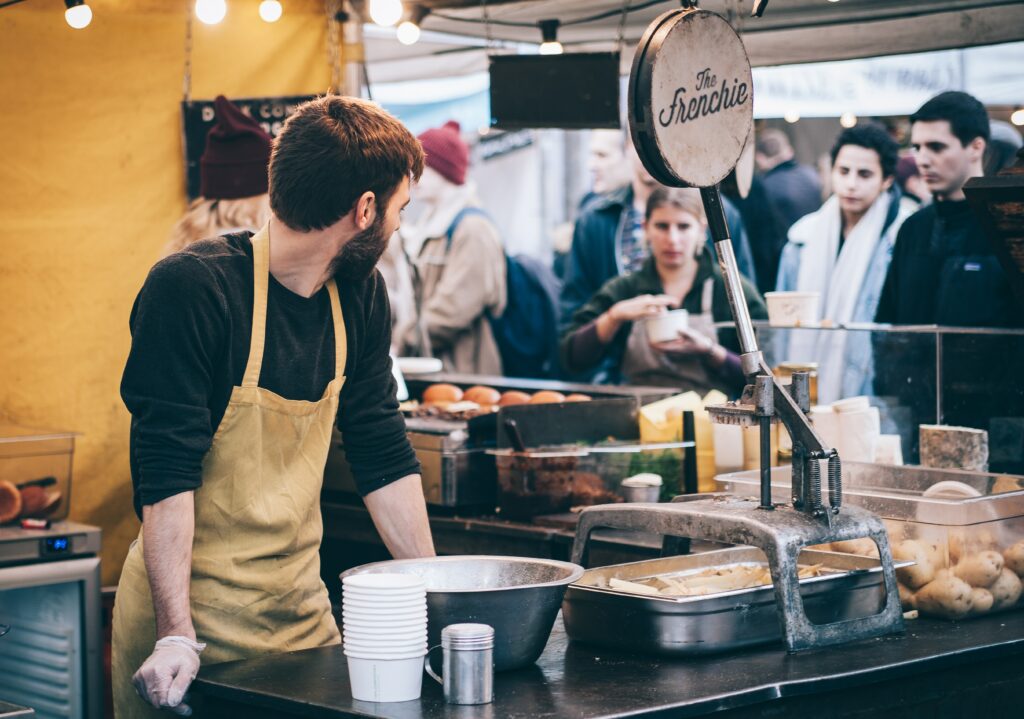While the headlines seem to be full of artificial intelligence stories, AI technology is certainly not a new phenomenon. But as AI appetite grows, does this technology taste like good news for food and beverage firms?
The value of the market for AI in the food and beverage sector in particular is expected to reach an eye-watering $29.94bn by 2028. What about today? With many in the industry still unsure about how AI can benefit their businesses, how is it already being used and to what effect?
For the food and beverage sector in particular, we are already seeing more businesses reaping the benefits of AI technologies; the result of years of research and development culminating in sector-specific applications. These innovations are now making a real difference to how businesses operate.
Where some businesses are already seeing the benefit of AI is through the use of machine learning technologies. Machine learning is a subset of AI where computer systems can learn and adapt without being explicitly programmed, using algorithms and statistical models to intelligently analyze data, drawing inferences from data patterns to inform further action. With its ability to factor in an inordinate number of data values, parameters, what-if scenarios and other contributing factors, machine learning can produce accurate and timely recommendations for almost every aspect of the food supply chain.
Machine learning in action
Machine learning for the food and beverage sector has a lot of potential, like precision farming, for instance. Machine learning can analyze past harvests in terms of both quantity and quality, in combination with weather forecasts to inform which fields need watering and when to use fertilizer, for example.
Leading animal nutrition company Nutreco has achieved additional production cycles of healthier shrimps, while at the same time using 30 percent less feed. They use audio sensors in aquaculture to listen to the shrimps, understanding when they are hungry. Machine learning determines when and how much the shrimps must be fed, which serves to lower the feed conversion ratio and shortens the shrimp production cycle, doubling production without huge intensification.
Global bakery ingredients business Zeelandia Group is making good use of machine learning, too. The business has addressed the challenges of higher costs and lack of available bakery ingredients by deploying a machine learning model. It recommends products and prices to be offered to their bakery customers based on what similar customers are buying. Through the implementation of applied AI, the group has achieved an 83 percent faster time to prepare product recommendations for customers, cutting the time down from 30 minutes to five minutes. As a result of product recommendations taking less time, Zeelandia Group employees can provide a better customer experience. Zeelandia Group also benefit from the addition to increased revenue per transaction and share-of-wallet per customer, improving the accuracy and speed of product recommendations and pricing strategies.
One more example is a global provider of goat and organic cow cheese, Amalthea. The business is using machine learning to make cheese quality more predictable and to maximize yield, building customer loyalty and boosting sustainability. Previously, Amalthea could only manually analyze milk yield on a weekly basis, which made it difficult to adjust the process parameters to optimize the yield. With machine learning, Amalthea can view the yields immediately, as well as receive direct insight into what is influencing a yield change.
The changes brought about by machine learning have helped Amalthea reduce its overall waste from manufacturing, as the company is now able to quickly identify pain points and improve processes simultaneously. These changes have had a direct impact on the company’s profitability and bottom line: for every one percent increase in yields, Amalthea expects to save approximately 500,000 Euros.
The evolution of AI, from farm to fork
Put simply, AI (and machine learning in particular) has the potential to optimize all areas of food manufacturing. With the ability to facilitate smart, industry-specific applications and improve every aspect of the supply chain from farm to fork, AI is already helping to build agile supply chains and drive revenue growth.
As technology develops and more businesses discover the benefits that can be realized with the application of AI, AI capabilities will develop even further and be refined to solve specific industry or business problems. As we’ve witnessed already, the considered application of AI technologies is helping businesses across the food and beverage industry and supply chain, and this is only set to increase over the next few years. AI is already proving to be a driver of proven efficiencies, as well as helping businesses to plan for all eventualities, delivering the actionable insight that’s needed to always stay one step ahead of the competition.





